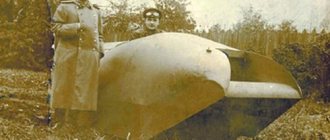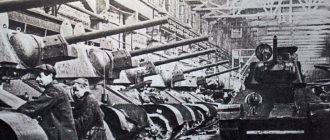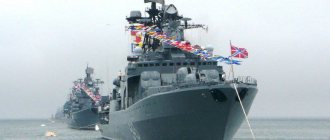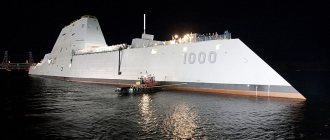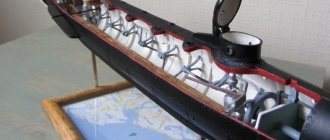Currently, the US Navy has 11 nuclear-powered aircraft carriers. Each of these ships, in addition to its name, has a special designation containing three letters (CVN), indicating that the ship is a multi-purpose nuclear aircraft carrier, and numbers that are the serial number of a particular aircraft carrier.
10 out of 11 American aircraft carriers are Nimitz class. Construction of the first aircraft carrier of this class began in 1968. These warships are considered the largest military vessels in the world: their length exceeds 300 meters, their displacement is almost 100,000 tons, and 5-6 thousand people are required to service each such aircraft carrier.
As an introduction
In our modern times, there are only ten states in the world that have aircraft carriers as part of their naval forces. The undisputed leaders of the conditional rating are the Americans, who have 11 aircraft carriers. Second place was shared between Italy and Spain. These countries each have two of these ships. Next come China, Russia, France, Brazil, India, Thailand, and Great Britain. All of these states have one aircraft carrier.
US attack aircraft carriers
If we trace the history of the formation of this class in the American Navy, we can distinguish several stages.
"Essex"
This aircraft carrier began a series of similar ships produced under Project 27, and constituted the largest group. During the period (1941-1946) 24 units were built. All written off.
"Midway"
This is the largest warship in size among those that were laid down in the period before 1946. According to the master development plan, the series was to consist of 6 units. However, due to the end of World War II Aircraft Carriers, the order was halved. All three aircraft carriers have been withdrawn from the fleet.
"Forrestal"
They were planned to be built according to Project 80, which took into account the experience of the combat use of similar ships of all warring parties. Construction of the first post-war aircraft carrier of this series began in 1952. In 1955, it was transferred to the fleet and commissioned.
Aircraft carrier of the Forrestal series Source: Wikipedia.org
During the production process, the project was significantly redesigned and the remaining two (the second, “Constellation”, the third, “Kitty Hawk”) were built according to project 127A.
The fourth, “America,” and the fifth, “John F. Kennedy,” were built according to modified designs (127B, 127C, respectively). The 5th aircraft carrier of this type was the last with a non-nuclear power plant. As of 01/01/21, all were written off and disposed of.
"Enterprise"
This name was given to the nuclear-powered aircraft carrier, which began its service with the USS on 11/25/61. This is the world's first ship with a nuclear power plant. Decommissioned 02/03/17.
Purpose
Modern aircraft carriers of the United States are, in fact, a vivid symbol of power and strength. US admirals call these ships the “backbones” of their entire navy. In principle, this is easily explained, since these sea vessels are capable of staying autonomously for several months on the open sea or ocean, far from their land bases, and also moving at high speed to any point on the planet, taking part in hostilities against absolutely any enemy and at the same time be at a great distance from him, thereby ensuring a high level of personal safety.
The problem has matured
In September 2022, the American online publication The Business Insider published the article These are the world's 7 worst aircraft carriers that are currently in service, in which it rated the worst aircraft carriers in the world. The list includes our TAVKR Admiral Kuznetsov, the Thai aircraft carrier Chakri Naruebet, two Australian ones - Canberra and Adelaide, as well as two American ones - Wasp and the newest Gerald Ford.
Our aircraft-carrying cruiser was not criticized only by the laziest journalist from the foreign media, but for a new product, a ship that had just left the shipyard slips, to be included in the anti-rating is an unusual case.
Facts about breakdowns plaguing Gerald Ford periodically appear in various open sources of information. What is this - an ordinary case with the lead ship of the series or a pattern that the US Navy command is carefully hiding from taxpayers?
Following this, an article by expert Sam LaGrone about the current state of affairs with aircraft carriers appeared on the website of the US Naval Institute. Immediately after this, the Belgian Internet resource Dedefensa tried to shed light on what was happening with American aircraft carriers, which published its response to LaGrone’s article. The instant appearance of such an array of information indicates that the problem has “ripened.”
LaGron cites the following facts. The largest number of aircraft carriers - 30 ships - was in 1973, when the US Navy provided maximum air support to ground forces in South Vietnam. The same year marks the highest operational availability of aircraft carriers - 42% of the roster.
That is, during the Vietnam War, 12 such US Navy ships were involved in combat operations. In modern times, these are almost all American aircraft carriers. At the same time, there were periods when these ships spent more time at anchorage or in repair docks. Not surprisingly, this period occurred in 2018 - 15% operational availability and only 11 aircraft carriers in the fleet.
It would seem, what is wrong with this information? For ordinary American citizens, an aircraft carrier at anchor is a reason for excursions or a chance to attend an air show dedicated to US Independence Day. Experts consider such a simple trend to be a dangerous trend.
Team Core
Despite how many aircraft carriers the United States has now and how many there will be in the future, these ships were, are and will be the backbone of the carrier strike group. Moreover, any such vessel does not have its own powerful defensive weapons and is not adapted to carry out independent actions. An aircraft carrier moves along the water surface under the cover of other ships. A distinctive feature of the strike group is its ability to cover a distance of almost 1,500 kilometers in a day and at the same time remain unnoticed by a potential enemy.
Launching of the aircraft carrier Henry Ford
USS George W. Bush became the last American Nimitz-class aircraft carrier. In 2009, construction began on a new type of ship, the Ford. According to the plans of American shipbuilders, Ford aircraft carriers should become an improved version of the Nimitz class ships. The new aircraft carriers will be equipped with the latest technology, their hulls will be larger and stronger, and fewer people will be required to maintain these ships.
In 2022, the first ship of the new class, the Gerald Ford (CVN-77), was launched, becoming the eleventh aircraft carrier in the US Navy. The construction of this majestic ship cost the American government $13 billion. "Gerald Ford" is practically invisible to enemy radars, equipped with 25 decks and an improved system for receiving and launching aircraft.
The commissioning of the aircraft carrier was postponed several times due to technical problems. Despite the fact that the ship was officially enlisted in the US Navy, the Gerald Ford has still not passed all the necessary tests. Most likely, full operation of the vessel in combat mode will begin only in 2020.
By 2023, the US government plans to complete the construction of two more Ford-class aircraft carriers.
Wartime tasks
When considering the combat missions of aircraft carriers, it is advisable to familiarize yourself with the purpose of the entire aircraft carrier strike group, which was created to:
- Strikes at various targets located both on the coast and on land.
- Air cover and support for landing forces and ground units that conduct their operations in the coastal zone.
- Gaining and maintaining absolute superiority in the airspace in the area of the planned military operation.
- Providing air defense for other ships, landing forces, convoys while they are moving across the sea.
- Blockades of the enemy's coastal line.
- Conducting tactical aviation reconnaissance.
As a matter of fact, in peacetime, the United States, through the use of air strike groups, shows the whole world its power and strength in key regions of the planet from a political point of view for the country.
American Titans
So, let's take a closer look at how many aircraft carriers there are in the United States. As mentioned above, there are eleven of them. The list of US aircraft carriers is as follows:
- "Nimitz".
- "Dwight Eisenhower."
- "Theodore Roosevelt."
- "Carl Vinson."
- "Abraham Lincoln".
- "George Washington".
- "John C. Stennis."
- "Harry Truman".
- "George Bush".
- "Ronald Reagan."
- "Gerald R. Ford."
Now let's get to know them better.
Sixth ship of the Nimitz class
This is exactly what the aircraft carrier George Washington is. The ship was launched in July 1990. The ship's technical capabilities allow it to carry about 90 aircraft and helicopters, which are lifted directly onto the deck using four freight elevators. The total deck area is 18,000 square meters. The aircraft carrier is capable of accommodating about 6,250 people on board. To stop the ship, it uses two anchors, each weighing 30 tons.
The ship became the first ship with a nuclear power plant for the United States to be permanently stationed at a military base on the territory of a foreign country. This happened in 2008, when the aircraft carrier was sent to Japan. That same year, an emergency occurred on the ship - a severe fire. The crew was able to completely extinguish the fire only after 12 hours, and the amount of damage amounted to about $70 million. 37 people were injured.
Ship of Presidents
"Carl Vinson" is an aircraft carrier that entered service in May 1982. The ship is named after the congressman who served as head of the Armed Services Committee for 29 years. The ship's main duty stations were the Indian and Pacific Oceans, as well as the Persian Gulf. The ship was involved in the filming of the film “Top Gun”.
After the destruction of Osama bin Laden in the spring of 2011, his body was delivered to this aircraft carrier, after which it was sent to the waters of the Arabian Sea. And six months later, Barack Obama and his wife attended a basketball match between student teams, which was held on the deck of this sea giant.
Ship for women
In fact, there is nothing offensive in this phrase for male sailors. It’s just that the aircraft carrier Abraham Lincoln became the first ship of its kind on which women were allowed to serve. Unfortunately, there was a tragedy here. In October 1994, officer Kara Hultring died during landing after a training flight.
During the 2003 combat operation in Iraq, the ship flew over 16,500 combat missions.
An aircraft carrier is a place where everything is subject to very clear coordination and order. Since the length of the runway is only 150 meters, fighters use a so-called catapult to take off, which, one might say, literally throws the plane into the air.
But the most important element of the runway is the brake cable. During landing, the aircraft pilot must be able to hook the hook onto one of four such locking elements. In this case, the plane lands at full speed. This is due to the fact that in case of failure, he will be obliged to make an emergency takeoff again. By the way, on the ship there is a so-called red room, in which pilots are on duty in full combat readiness around the clock, being ready to take off at any moment to complete a mission.
Interesting fact: twice a day, absolutely every member of the deck crew goes on a march. All these military men walk close to each other and examine the deck in detail in order to find various foreign objects that could cause extremely unwanted mechanical damage to the expensive turbine.
Why are 11 US Navy aircraft carriers not enough?
Kyle Mizokami, whom we have already studied very well thanks to his impressive competence in naval matters and such a charming sense of humor, pleased us with another masterpiece (I really am not afraid of this word).
The US Senate and Congress are arguing whether it’s time to stop building aircraft carriers, not to send (yes, send) two or three of the oldest ones to scrapping, and old Kyle pleases us with material of a completely different kind.
Why 11 Navy Aircraft Carriers Simply Aren't Enough
So, what did old Kyle please us with this time? Here's what: referring to the opinion of admirals in various positions in the fleet, Mizokami repeats after them simply amazing news: 11 aircraft carriers are not enough for the US fleet.
It is necessary either to have more aircraft carriers, or to use the existing ones less actively.
The most interesting thing is that just recently, in the Senate, during a speech regarding the confirmation of his candidacy for the post of commander of the Asian-Pacific Forces, Admiral John Aquilino said that “The United States has the necessary number of aircraft carriers to meet the needs around the world, unless there are additional problems."
Here it is probably necessary to recall that according to the law, the US Navy must operate at least 11 aircraft carriers to ensure the security of the country. And recently, a lot of thoughts have appeared on the topic that, in fact, the States do not need so many expensive giants. It makes sense to reduce the amount and spend the freed-up money on something more pressing.
In general - nothing new.
However, these statements gave rise to a flurry of retaliatory attacks. And this is quite natural. Money, and everything related to aircraft carriers is not just money, it is AMOUNT, and there will always be contenders for it.
As for the counterarguments, this is due to the many arguments and reports that have appeared about how overworked the crews of aircraft carriers are. The culmination was the record 10-month combat duty of the aircraft carrier Nimitz, primarily due to the fact that it could not be relieved in time. The remaining ships were either on similar duty or were under repair.
And here a simply masterpiece conclusion suggested itself: it is necessary to build more aircraft carriers so that ship crews do not get killed in the service in the name of their country. Or (if you don’t build) you need fewer tasks for aircraft carriers.
At the hearing, Senator J. Roger Wicker asked Aquilino whether 11 aircraft carriers were enough for the Navy: “We complied with the law with 11 (ships), but is that enough? Just tell us—we need to know. We can change the law of the land if we get enough votes.”
It's an interesting question, isn't it? The point, apparently, is that Wicker represents the state of Mississippi, where the Huntington Ingalls Industries (HII) shipyard is located, which builds... aircraft carriers! Not only in Mississippi, but also (mostly) in Virginia.
Aquilino responded as a sailor should: “I think the size of this force is right at this time, unless additional problems arise.”
About these “additional problems”... Interestingly, in general they can be divided into two groups. The first is some kind of suddenly appearing enemy. So strong that additional aircraft carriers may be required to curb and reconcile it. Can you quickly imagine this now? So I can’t.
Designating an enemy in the United States is a simple and commonplace matter, but in this case it may not work out.
And the second one. This is the technical fatigue of ships, the need to spend huge sums on their repair and maintenance. The same Nimitz has been in service since 1975. Eisenhower has been hot on his heels since 1977. 45 years in service is no joke.
And they serve, and will serve. At least until they sort out the problems of Ford, which was supposed to go on combat duty in 2018, but in fact it is no longer expected until 2024. Technical reasons. On a completely new ship.
The Navy is required by law to operate at least 11 aircraft carriers. And while Wicker is correct that the service has 11 carriers, that doesn't tell the whole story. The 11th aircraft carrier, the new USS Gerald R. Ford, cannot currently be deployed. The ship, whose first operational patrol was originally scheduled for 2022, is stuck on technical issues and may not conduct its first patrol until 2024.
And despite the fact that there are no major conflicts in the world, for some reason American aircraft carriers spend quite a lot of time on combat missions.
During the Cold War, the US Navy's 13 to 15 aircraft carriers typically spent about 180 days at sea at a time. Over time, the aircraft carrier fleet became smaller and smaller, but for some reason the tasks did not decrease.
In January 2022, the Abraham Lincoln completed a 295-day patrol. In addition, last year the Dwight Eisenhower and Theodore Roosevelt spent 200 days at sea.
US Navy aircraft carriers spent a total of 855 days at sea in 2022, 258 more days than in all of 2022, US Naval Institute News reports.
What the crews of the ships are doing and what tasks the command assigned to them are two questions. And third - how much did all this cost?
It is clear that if you have 10 aircraft carriers, this does not mean that you have 10 aircraft carriers ready to act at any time.
For aircraft carriers, the navy generally follows the one-third rule that governs most navies: at any given time, one-third of the ships are on patrol, one-third is preparing for or just leaving patrol, and the final third is undergoing maintenance at the shipyard.
In emergency situations, many (but not all) ships preparing to go on patrol may be alerted, and ships completing their patrol may be delayed in their return. Thus, at any given time, 4 of the 11 aircraft carriers may be available for operations, and 5 or 6 in emergencies.
I just want to say: “Guys, why are you killing yourself so much? Well, you’ll never kill yourself like that!”
There is a catastrophic shortage of aircraft carriers. The Eastern Fleet has one operational Eisenhower left, plus a Lincoln in service, the rest are under repair. There is no way they can turn the Ford around in the west.
One inevitably begins to believe that with so many breakdowns, more aircraft carriers are needed. Or indeed, don’t get involved in operations where an aircraft carrier is absolutely necessary. Sailor Ryan can also be saved by a destroyer.
Of course, there are many ships in the US Navy that are just as deadly as aircraft carriers. Same "Virginia". The whole question is - who to fight against?
When this question is answered, then it will make sense as to how many aircraft carriers the United States really needs.
And what will all this cost from a financial point of view?
In the meantime, it really makes sense to think about the fact that there is no need to drive such expensive ships around the world so hard. The world didn’t seem to ask for this.
Fighter against ISIS
The aircraft carrier Harry Truman was launched on July 25, 1998, with the participation of then US President Bill Clinton. The construction of the ship cost the country's budget $4.5 billion. It is also worth noting that this American aircraft carrier has classified armor and a service life designed for 20-25 years.
The ship's first combat mission was a swim in the Persian Gulf in November 2000. At the end of December 2015, the aircraft carrier took an active part in the operation against the terrorist organization Islamic State. Aircraft sorties were carried out from the deck of the ship to carry out attacks on militant positions. The ship and its air wing interacted with French naval forces, which were also involved in the operation in Syria.
List of excluded aircraft carriers
As of January 2022, this list included 67 ships that had the status of aircraft carriers in the US Navy, 47 were excluded from the list. The cause could be an accident or technical failure.
| List of excluded aircraft carriers | |||||
| No. | Name | Type | Board number | Laid down/entered into service | Elimination date |
| 1 | "Ranger" | "Ranger" | CV-4 | 26.09.1931/06.1934 | 10/18/1946 |
| 2 | "Enterprise" | "Yorktown" | CV-6 | 16.07.1934/05.1938 | 02/17/1947 |
| 3 | "Essex" | "Essex" | CV-9 | 28.04.1941/31.12.1942 | 06/30/1969 |
| 4 | "Yorktown" | "Essex" | CV-10 | 1.12.1941/15.04.1943 | 06/27/1970 |
| 5 | "Intrepid" | "Essex" | CV-11 | 1.12.1941/16.08.1943 | 03/15/1974 |
| 6 | "Hornet" | "Essex" | CV-12 | 3.08.1942/29.11.1943 | June 26, 1970 |
| 7 | "Franklin" | "Essex" | CV-13 | 7.12.1942/31.01.1944 | 10/1/1964 |
| 8 | "Randolph" | "Essex" | CV-15 | 10.05.1943/9.10.1944 | June 1, 1973 |
| 9 | "Ticonderoga" | "Essex" | CV-14 | 1.02.1943/8.05.1944 | 16.11.1973 |
| 10 | "Lexington" | "Essex" | CV-16 | 5.09.1941/17.02.1943 | November 8, 1991 |
| 11 | "Bunker Hill" | "Essex" | CV-17 | 5.09.1941/24.05.1943 | November 1, 1966 |
| 12 | "Wasp" | "Essex" | CV-18 | 8.03.1942/24.11.1943 | July 1, 1972 |
| 13 | "Hancock" | "Essex" | CV-19 | 26.01.1943/15.04.1944 | 01/30/1976 |
| 14 | "Bennington" | "Essex" | CV-20 | 15.12.1942/6.08.1944 | 01/15/1970 |
| 15 | "Boxer" | "Essex" | CV-21 | 13.09.1943/04.1945 | 12/1/1969 |
| 16 | "Independence" | "Independence" | CVL-22 | 1.03.1941/01.1943 | 08/28/1946 |
| 17 | "Bello Wood" | "Independence" | CVL-24 | 11.08.1941/03.1943 | 01/13/1947 |
| 18 | "Cowpens" | "Independence" | CVL-25 | 17.12.1941/05.1943 | November 1, 1959 |
| 19 | "Monterey" | "Independence" | CVL-26 | 29.12.1941/06.1943 | 01/15/1956 |
| 20 | "Langley" | "Independence" | CVL-27 | 11.04.1942/08.1943 | 02/11/1947 |
| 21 | "Cabot" | "Independence" | CVL-28 | 13.03.1942/06.1943 | 02/12/1947 |
| 22 | “Bataan” | "Independence" | CVL-29 | 31.08.1942/11.1943 | 08/09/1954 |
| 23 | "San Jacinto" | "Independence" | CVL-30 | 26.10.1942/12.1943 | June 1, 1970 |
| 24 | “Bon Homme Richard” | "Essex" | CV-31 | 1.02.1943/26.11.1944 | July 2, 1971 |
| 25 | “Pour” | "Essex" | CV-32 | 21.02.1944/11.04.1946 | 05/15/1959 |
| 26 | "Kearsarge" | "Essex" | CV-33 | 1.03.1944/2.03.1946 | 02/13/1970 |
| 27 | "Oriskany" | "Essex" | CV-34 | 1.05.1944/25.09.1950 | September 30, 1975 |
| 28 | "Antietam" | "Essex" | CV-36 | 5.03.1943/28.01.1945 | 05/08/1963 |
| 29 | "Princeton" | "Essex" | CV-37 | 14.09.1943/18.11.1945 | 01/30/1970 |
| 30 | "Shangri-La" | "Essex" | CV-38 | 15.01.1943/15.09.1944 | 07/30/1971 |
| 31 | “Lake Champlain” | "Essex" | CV-39 | 15.03.1943/3.06.1945 | May 2, 1966 |
| 32 | “Tarawa” | "Essex" | CV-40 | 1.03.1944/8.12.1945 | 03/13/1960 |
| 33 | "Midway" | "Midway" | CVB-41 | 27.10.1943/10.09.1946 | 04/11/1992 |
| 34 | “Franklin D. Roosevelt” | "Midway" | CVB-42 | 1.12.1943/27.10.1945 | September 30, 1977 |
| 35 | “Coral Sea” | "Midway" | CVB-43 | 10.07.1944/1.10.1947 | 04/26/1990 |
| 36 | "Valley Forge" | "Essex" | CV-45 | 7.09.1944/3.11.1946 | 01/16/1970 |
| 37 | “Philippine Sea” | "Essex" | CV-47 | 19.08.1944/11.05.1946 | 12/28/1958 |
| 38 | "Saipan" | "Saipan" | CVL-48 | 10.07.1944/14.07.1946 | 01/14/1970 |
| 39 | "Wright" | "Saipan" | CVL-49 | 21.08.1944/9.02.1947 | 05/27/1970 |
| 40 | "Forrestal" | "Forrestal" | CV-59 | 14.07.1952/1.10.1955 | 09/11/1953 |
| 41 | "Saratoga" | "Forrestal" | CV-60 | 16.12.1952/14.04.1956 | 08/20/1994 |
| 42 | "Ranger" | "Forrestal" | CV-61 | 2.08.1954/10.08.1957 | 07/10/1993 |
| 43 | "Independence" | "Forrestal" | CV-62 | 1.07.1955/10.01.1959 | September 30, 1998 |
| 44 | "Kitty Hawk" | "Kitty Hawk" | CV-63 | 27.12.1956/29.04.1961 | 01/31/2009 |
| 45 | "Constellation" | "Kitty Hawk" | CV-64 | 14.09.1959/27.10.1961 | August 7, 2003 |
| 46 | "America" | "Kitty Hawk" | CV-66 | 9.01.1961/23.01.1965 | 08/09/1996 |
| 47 | "John F. Kennedy" | "Kitty Hawk" | CV-67 | 22.10.1964/7.09.1968 | August 1, 2007 |
There was another class of warships, escort aircraft carriers. The United States produced and supplied them to third countries that were its allies in the 1939-45 war.
The only such aircraft carrier representing this class in the American fleet is AVG-4, named Charger, tail number CVE-30. Decommissioned 03/15/46.
Ship of the future
The Ford-class aircraft carrier is an American combat ship that replaced the already morally and physically obsolete Nimitz ships. The commissioning of the new aircraft carrier is planned for 2017.
A distinctive feature of the new vessel is the presence on it of an electromagnetic catapult, which operates using a linear electric motor. The catapult makes it possible to accelerate fighters more smoothly and accurately, which reduces the overloads acting on the steel structure of each such expensive airborne aircraft.
In addition, a pair of new reactors built specifically for this aircraft carrier have the ability to produce 25% more electrical energy than previous similar power plants. The resulting power reserve allows the ship to reload the catapult much faster. The number of service personnel has also decreased, which now amounts to 4,660 people. This helps reduce the burden on the budget, since this American aircraft carrier will cost the country 4 billion less to operate than its predecessor.
Fortieth President of the United States
The aircraft carrier Ronald Reagan became a full member of the fleet in July 2003. The ship has a couple of significant differences from its “brothers”. The first is the presence of three (not four) high-strength brake cables. Secondly, the bow of the ship has a bulbous shape, which was done to increase the stability of the entire aircraft carrier.
The Ronald Reagan is capable of carrying about ninety helicopters and airplanes on board. The main striking force of the ship is the F/A-18 Hornet multi-purpose combat aircraft, which have already been tested many times in practice in various US combat operations.
Aircraft carriers of the United States of America - new models and old helpers
America has long been recognized as the country with the most powerful weapons. It is there that the largest aircraft carrier fleet in the world is located.
Today, the United States of America has eleven operational aircraft carriers, ten of which are in naval service and one is under construction. All 10 aircraft carriers were built from Nimitz-class ships, which replaced the previous ones that had failed. Before the Nimitz-class aircraft carriers, there were several other types, for example, the Midway class of 1952, the escort aircraft carriers Sangamon of 1942, the Forrestal ships from 1955, the Kitty Hawk, developed back in the 1960s (remarkably , that only four ships of this type were produced), Saipan since the 1940s (there are only two ships). All of the listed models are currently withdrawn from service and are no longer produced.
Registered combat vessels in the American Navy as of today:
- USS Nimit, CVN-68, is the first aircraft carrier currently stationed at Everett;
- “Dwight Eisenhower” number CVN-69;
- “Carl Vinson” number CVN-70, located in San Diego;
- “Theodore Roosevelt” number CVN-71;
- “Abraham Lincoln” with the number CVN-72, until 2015, will be in Norfolk for recharging of the nuclear reactor core;
- "George Washington" number CVN-73, sent to Yokosuka;
- “John C. Stennis” number CVN-74;
- “Harry Truman” number CVN-75;
- “Ronald Reagan” number CVN-76;
- George Bush number CVN-77, the last Nimitz-class ship in operational condition.
All of these aircraft carriers are equipped with a nuclear power plant, have a displacement of about 106 thousand tons and operate as part of carrier strike groups. They are intended for the defense of naval forces and the destruction of surface targets. The armament of such ships consists of fighter-bombers, long-range radar detection aircraft, electronic warfare, transport, and anti-submarine helicopters. Onboard weapons include anti-aircraft, missile launchers and an artillery system. All ships of this class have a side number, which indicates that this ship is a multi-purpose ship with a nuclear power plant and has a serial number in the special list of the American naval forces.
The first US aircraft carrier was commissioned in 1975, and the last in 2009.
The maintenance of each ship in this series costs the government about $160-170 million a year. The United States actively used these ships in many military operations, including conflicts with Iraq and Yugoslavia. So during the war in Iraq, 87 thousand sorties were flown.
The eleventh US aircraft carrier, proudly named Gerald Ford and assigned the serial number CVN-78, is being built in the new Ford class. The construction of these nuclear multipurpose ships began in 2009. They are an improved version of the Nimitz class aircraft carriers. The differences between them are a significant increase in size and improvement of weapons. They plan to introduce the latest developments and elements of stealth technology in the Ford class ships. Because of this, the crew of the new ship will decrease by 500-900 people. Construction of the aircraft carrier Gerald Ford is scheduled to be completed in 2015. In addition to it, it is planned to launch two more ships of similar models to replenish the US fleet. Afterwards, according to a special program developed by the Secretary of the American Navy, one ship will be produced every five years until the number of new ships in the fleet is ten.
The Gerald Ford is the first aircraft carrier to be constructed entirely in 3D design. In addition, significant changes were made to the internal contents of the vessel:
- the area intended for aircraft departures has been expanded;
- a nuclear reactor after modernization will be able to operate continuously for up to 50 years without replacing fuel rods;
- ammunition will consist of bombs and air-to-ground missiles.
These aircraft carriers will be able to carry about ninety helicopters and airplanes, as well as other aircraft. In the United States, it is planned that ships of this class will replace older ones that are approaching their final service life of 50 years.
"Dirty" aircraft carrier
It is no coincidence that the ship "George Bush" was given such a nickname, and all because the vacuum flushing system of the toilets on the ship very often fails. That is, to put it simply, all 423 toilets on the ship are clogged. The first problems with them arose back in 2011, when the aircraft carrier was making its voyage to the Persian Gulf to carry out a combat mission.
However, this ship also has positive qualities. Thus, in particular, the electronics and communication system has been modernized. Also, the refueling process has been brought to a semi-automatic level. Gas traps on deck have been updated.
Active participant in special operations
When studying active US aircraft carriers, one cannot ignore the Theodore Roosevelt. This ship was the first existing aircraft carrier to be assembled using a modular design. Each module was built separately from each other, and the installation of all these parts was carried out at a single point by welding. This principle of building the vessel made it possible to significantly reduce the initially stated time frame for completing construction work. As a result, on October 25, 1986, the ship was accepted into military service and became a full member of the US Navy. Beginning on January 16, 1991, the aircraft carrier took part in hostilities in the Persian Gulf. 4,200 missions were flown from its deck, dropping nearly 5 million pounds of ordnance into enemy territory.
After the terrorist attacks of September 11, 2001, the ship went on a combat mission against al-Qaeda, which was then based in Afghanistan. On October 4, 2001, the aircraft carrier launched destructive missile attacks from Arabian waters on militant positions. As a result of the operation, the ship spent 159 days at sea, which set a record for ships on the high seas after World War II.
Regardless of how many aircraft carriers in the United States are in combat duty, each of them is required to regularly undergo a full overhaul. “Theodore Roosevelt” was no exception in this matter. From the summer of 2009 to the summer of 2013, he spent time at the Newport News Shipbuilding shipyard (Virginia). Thanks to this reconstruction, the ship will be able to remain in the ranks of the US Navy for another 23 years. The final cost of the work was $2.6 billion.
Types of aircraft carriers
At the end of World War II, the US Navy divided all of its combat aircraft-carrying ships into 5 subclasses:
- CVA – drums;
- CVAN – shock atomic;
- lungs (CVL);
- anti-submarine (CVS);
- The fifth group included LPH (landing helicopter carriers), AVT (auxiliary air transporters). After the end of the war they were used in training roles.
In the mid-seventies of the last century, as part of the ongoing reform of the fleet, CVS began to be withdrawn from combat service, assigning their inherent functions to attack aircraft carriers. In this regard, the latter were renamed multi-purpose (abbreviation CV) and multi-purpose atomic (CVN).
Peace ship
In conclusion, finishing our consideration of the question of how many aircraft carriers there are in the United States, let us pay attention to a ship of this type called the Dwight Eisenhower.
This combat vessel was commissioned in 1977. In the period 1985-1987, the ship was undergoing its first planned reconstruction, and the second occurred in 2001-2005. For almost twenty years, the aircraft carrier was “peaceful” and did not take part in any military operations. However, in 1991 he was drawn to the war zone - the Persian Gulf. In 2000, the ship maintained no-fly zones in Iran during Operation Southern Watch.
